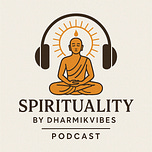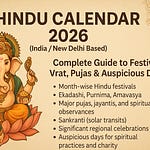Sanatana Dharma as the Eternal Framework
Sanatana Dharma, often referred to as the eternal way, is not simply a religion but a comprehensive system of cosmic, spiritual, and ethical knowledge. Rooted in the Vedas — the oldest scriptures of humanity — it transcends time and geography, offering a complete guide to understanding existence, consciousness, morality, and liberation.
Unlike many modern systems that separate science from spirituality, Sanatana Dharma interweaves metaphysics, ethics, cosmology, psychology, ritual, and social order into a unified whole. Its foundation lies in discovering and aligning with the eternal truths that govern life - known as Rta, or the cosmic order.
The Vedas: Foundations of Sacred Knowledge
The Vedas are the primordial texts of Sanatana Dharma. Composed in Sanskrit and passed down through oral traditions, they are divided into four main collections:
Rigveda – hymns and praises to cosmic forces
Samaveda – musical chants and rituals
Yajurveda – sacrificial formulas and procedures
Atharvaveda – spells, healing practices, and societal guidance
Each Veda contains layers: Samhitas (mantras), Brahmanas (rituals), Aranyakas (forest meditations), and Upanishads (philosophical teachings). These texts do not just prescribe rituals but map a sacred science - one that spans from external ceremonies to internal realization.
The Core Pillars of Vedic Philosophy
Sanatana Dharma articulates a multi-layered philosophy that accommodates various temperaments, intellects, and spiritual paths. Some of the key pillars include:
1. Dharma
Not merely duty or law, but the inherent nature of things. Living according to one's dharma means existing in harmony with both cosmic laws and one’s personal essence.
2. Karma
The law of cause and effect, not as punishment but as a mechanism for learning and evolution. Every action carries consequences across lives, shaping individual and collective destinies.
3. Moksha
Liberation from the cycle of birth and death (samsara). The ultimate goal of life, achieved through wisdom (Jnana), devotion (Bhakti), right action (Karma), or meditative discipline (Raja Yoga).
4. Atman and Brahman
The inner self (Atman) and the ultimate reality (Brahman) are one and the same. Realizing this non-duality is at the heart of Advaita Vedanta.
Paths to Spiritual Realization
Sanatana Dharma offers multiple yogic paths, acknowledging that different people need different approaches:
Jnana Yoga – the path of knowledge and introspection
Bhakti Yoga – devotion to the divine through love and surrender
Karma Yoga – selfless action without attachment to outcomes
Raja Yoga – meditation, ethical discipline, and concentration
Each path culminates in self-realization, leading to peace, purpose, and unity with the divine.
Vedic Cosmology & Metaphysics
Vedic cosmology speaks of multiple universes, cyclical time (kalpas), yugas (ages), and lokas (dimensions). Far from primitive mythology, this cosmology reflects a non-linear understanding of space and time, aligning closely with modern quantum physics and consciousness studies.
It maps the macrocosm (Brahmanda) and microcosm (individual self) as mirrors of one another - suggesting that inner spiritual work affects not just the self but the universe itself.
Sacred Texts Beyond the Vedas
Sanatana Dharma includes a rich array of scriptures that expand and personalize Vedic wisdom:
Upanishads – philosophical dialogues on the nature of existence
Bhagavad Gita – Krishna’s discourse on duty, devotion, and liberation
Ramayana & Mahabharata – epic narratives with deep moral, psychological, and spiritual insights
Puranas – mythologies and cosmologies that make philosophy accessible to the masses
Dharma Shastras – guidelines on law, ethics, society, and life stages
Each text caters to different levels of spiritual maturity and social context, reinforcing the inclusiveness of Sanatana Dharma.
From Rishis to Everyday Seekers: Who Carried the Wisdom?
The knowledge of the Vedas was transmitted by Rishis (sages) - enlightened beings who received truths in states of deep meditation. They formed oral lineages (parampara), ensuring the preservation of wisdom across thousands of years.
This sacred knowledge was never meant for mere scholarly pursuit but for inner transformation, guiding one from ignorance (avidya) to knowledge (vidya) and finally to wisdom (jnana).
Relevance in the Modern World
Despite its ancient origins, Vedic wisdom offers profound relevance today:
Mental health & mindfulness: Through yoga, dhyana (meditation), and ethical living
Sustainability: Through reverence for nature and interconnected living
Moral clarity: In a world of relativism, dharma provides a compass
Unity in diversity: Vedic pluralism promotes mutual respect among paths and people
Conscious living: Anchoring daily actions in awareness and self-discipline
Modern seekers, scientists, philosophers, and wellness practitioners continue to rediscover Sanatana Dharma as a universal framework - not bound by sectarianism but glowing with inclusivity.
Keywords & Concepts for Deeper Exploration
Here’s a map of the most essential keywords related to Vedic wisdom and Sanatana Dharma:
Philosophical & Spiritual:
Atman & Brahman
Vedanta Philosophy
Dharma, Karma & Moksha
Jnana, Bhakti, Karma, and Raja Yoga
Non-duality (Advaita)
Cultural & Historical:
Vedic Civilization
Rishis & Gurukuls
Upanishads, Puranas, Epics
Sanskrit as a sacred language
Ancient Indian Science & Cosmology
Modern Relevance:
Timeless Wisdom
Mindfulness & Holistic Living
Sacred Ecology
Spiritual Awakening
Consciousness Studies
Eternal Wisdom for a Changing World
The sacred knowledge system of Sanatana Dharma is not a relic of the past - it is a living ocean, still offering nourishment to modern minds and hearts. Whether one approaches it as a student of philosophy, a devotee, a seeker of truth, or simply a curious soul - its depths are inexhaustible.
Like the Vedic seers who looked inward to know the cosmos, may we too remember: “Tat Tvam Asi” - You Are That.
That same wisdom, consciousness, and divinity is within.











